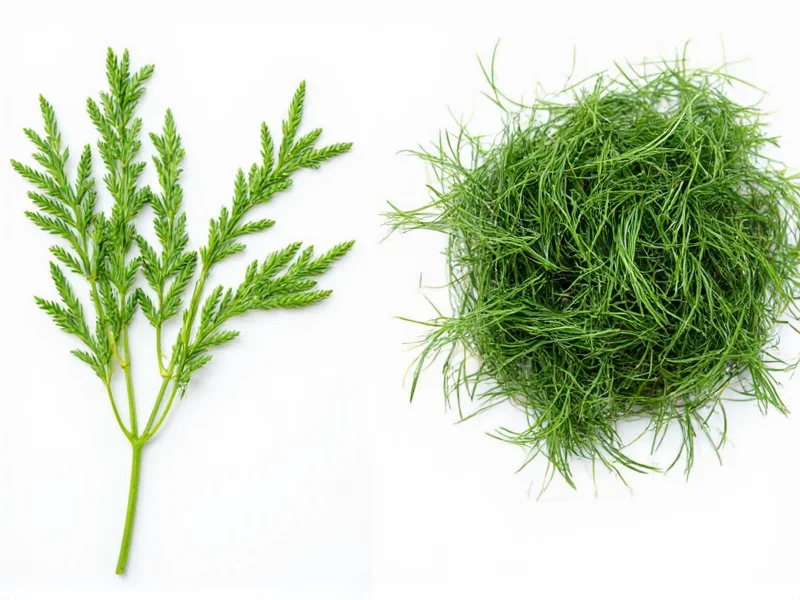Understanding fresh dill to dried dill conversion is essential for home cooks and professional chefs alike. When adapting recipes or working with what's available in your pantry, knowing the precise measurement substitution prevents flavor imbalances that can ruin dishes. The fundamental principle behind herb conversions is that dried herbs contain approximately three times the flavor concentration of their fresh counterparts due to the removal of water content during the drying process.
Why the 3:1 Conversion Ratio Matters
Dill undergoes significant chemical changes when dried. The dehydration process concentrates the essential oils responsible for its distinctive flavor and aroma. Fresh dill contains about 85-90% water, which evaporates during drying, leaving behind a more potent herb. This concentration effect explains why you need less dried dill to achieve equivalent flavor to fresh dill in recipes.
Professional chefs consistently apply this 3:1 ratio when substituting between fresh and dried dill. Using too much dried dill can create an overpowering, almost medicinal taste, while insufficient amounts result in bland dishes lacking dill's characteristic tangy, grassy notes. The conversion ratio remains consistent whether you're preparing pickles, fish dishes, salads, or creamy dill sauces.
Fresh Dill to Dried Dill Conversion Chart
| Fresh Dill | Dried Dill | Common Recipe Application |
|---|---|---|
| 1 teaspoon | ⅓ teaspoon | Salad dressings, dips |
| 1 tablespoon | 1 teaspoon | Fish seasoning, potato salad |
| ¼ cup | 1¼ tablespoons | Pickling recipes, sauces |
| ½ cup | 2½ tablespoons | Large batch recipes, soups |
| 1 cup | ⅓ cup | Commercial recipes, meal prep |
Practical Application in Cooking
When substituting dried dill for fresh in recipes, consider both timing and technique. Add dried dill earlier in the cooking process to allow time for rehydration and flavor development, particularly in soups, stews, and casseroles. For cold dishes like salads or dips, reconstitute dried dill by mixing it with a small amount of warm water or vinegar before incorporating.
Fresh dill works best as a finishing herb added at the end of cooking to preserve its delicate flavor and vibrant color. When using dried dill as a substitute in recipes calling for fresh, remember that the flavor profile differs slightly—dried dill has a more earthy, concentrated taste compared to fresh dill's bright, grassy notes.
Storage Considerations Affecting Conversion Accuracy
The age and storage conditions of your dried dill significantly impact its potency. Properly stored dried dill (in an airtight container away from light and heat) maintains optimal flavor for 1-2 years. Older dried dill loses potency, potentially requiring slightly more than the standard conversion ratio. Test older dried dill by rubbing a small amount between your fingers—if the aroma is weak, increase the amount by 25%.
Fresh dill should be used within 5-7 days of purchase for best flavor. Wilted or yellowing dill has diminished potency, which might require using 25% more than the recipe specifies when substituting in the opposite direction (dried to fresh).
Common Substitution Mistakes to Avoid
Many home cooks make critical errors when converting between fresh and dried dill. The most frequent mistake is using equal measurements (1:1 ratio), which results in overwhelmingly strong flavors. Another common error involves not accounting for dill's delicate nature—adding dried dill too late in cooking prevents proper flavor integration.
When working with dill weed versus dill seed, remember these are different products with distinct flavor profiles and conversion ratios. Dill seed requires a separate conversion calculation as it's significantly more potent than either fresh or dried dill weed.
Professional Chef Recommendations
Top culinary professionals recommend tasting as you go when substituting herbs. Start with the standard 3:1 conversion ratio, then adjust to personal preference. For delicate dishes like seafood or egg salads, use slightly less dried dill (closer to a 4:1 ratio). In robust recipes like pickles or hearty soups, you might need slightly more (approaching a 2.5:1 ratio).
When developing new recipes, test both fresh and dried versions side by side to understand the flavor differences. This practice builds intuition for when to adjust the standard conversion ratio based on specific dish requirements and personal taste preferences.











 浙公网安备
33010002000092号
浙公网安备
33010002000092号 浙B2-20120091-4
浙B2-20120091-4